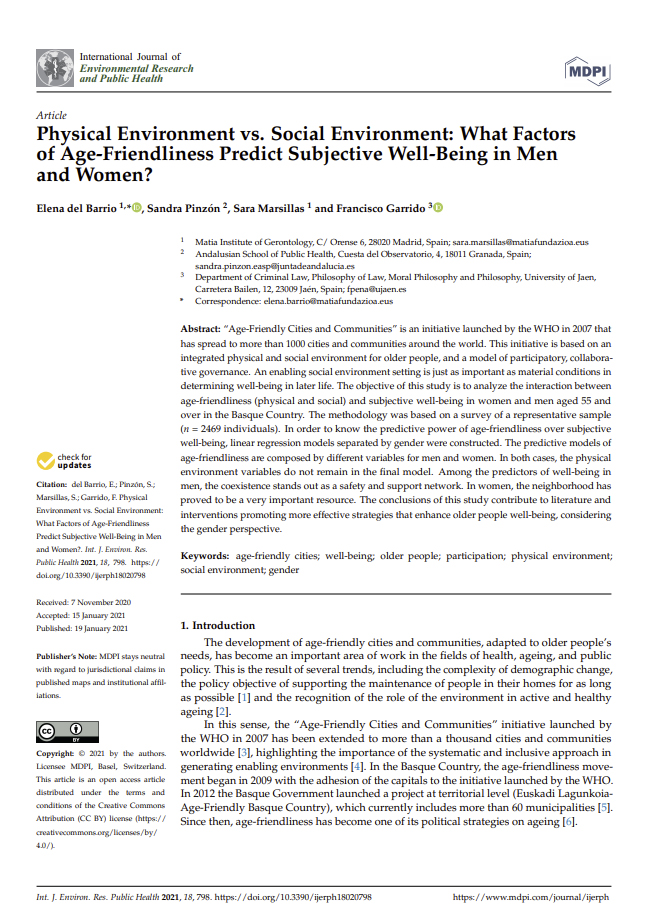Physical Environment vs. Social Environment: What Factors of Age-Friendliness Predict Subjective Well-Being in Men and Women?

International Journal of Environmental Research and Public Health 2021, 18(2), 798;
The development of friendly cities and communities adapted to the needs of older people has become an important area of work in the field of health, ageing and public policy. The "Age-Friendly Cities and Communities" initiative launched by the WHO in 2007 has spread to more than a thousand cities and communities around the world. This initiative is based on the promotion of an inclusive physical and social environment for older people from a participatory governance model.
The aim of this study is to analyse the interaction between friendliness, environment (physical and social), and subjective well-being in women and men aged 55 and over in the Basque Country. In other words, to analyse from a gender perspective which variables of the physical and social environment affect the subjective well-being of this population group.
The methodology used is based on the use of a survey with a representative sample (n = 2469 individuals). In order to know the predictive character of friendliness on the subjective well-being, linear regression models separated by gender were constructed.
The results show that the friendliness variables that predict well-being in men and women are different. Although in both cases, the variables of the physical environment did not remain in the final model. Among the most outstanding gender differences were found that for men coexistence and the safety and support network were factors that predicted their subjective well-being, while for women the neighbourhood seems to be one of the keys.


